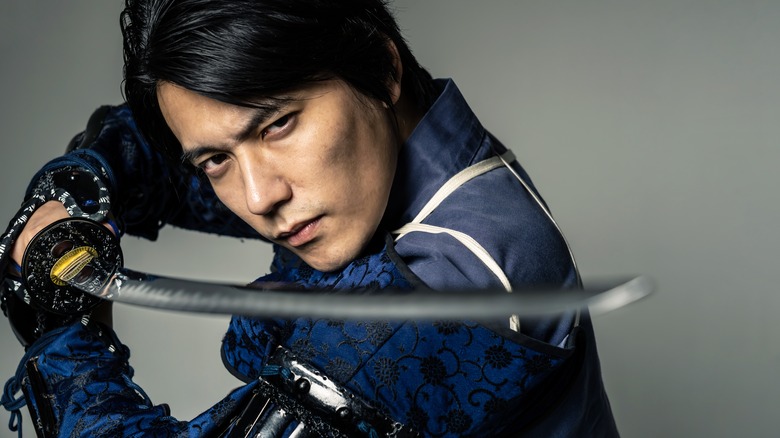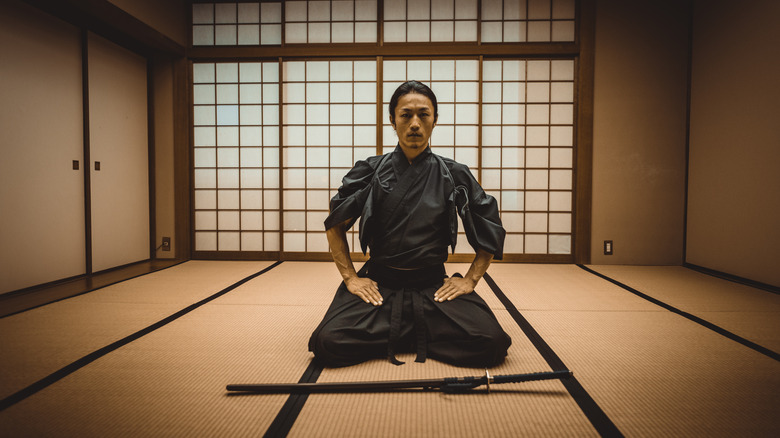The Real Reason We Can't Find The Legendary Honjo Masamune Sword
Use of the sword dates back to the earliest days of the samurai era in Japan, per History. Born in the 1260s, master Japanese sword maker Honjo Masamune was legendary for the strength and flexibility of his weapons, at a time when swords symbolized status and honor. Acclaimed throughout the ancient world, Masamune's work was so revered that by the late 1280s, the emperor of Japan himself, Emperor Fushimi, made him his primary weapon maker, according to All That's Interesting.
By the 1930s, one of Masamune's most legendary swords, the Honjo Masamune — considered a national treasure, and named after legendary Japanese general Honjo Shigenaga, who used it in battle — was in the possession of the ruling Tokugawa family. The story of where this mythic weapon is today involves the end of World War II, the U.S. Army, and possibly a boat trip across the Atlantic. Deepening the mystery, the Honjo Masamune remains missing. Here's why it's never been found.
It was turned over to the Americans
According to All That's Interesting, what makes Honjo Masamune's swords exceptional is the method with which they were made, a technique created by the master himself. Strong and flexible, his blades were fashioned entirely from steel — a breakthrough in that era. Masamune's blend of hard and soft steel was brought to exceptionally high temperatures, freed from impurities, and identifiable by the undulating pattern created by the process. Rarely could armor from the time withstand a Masamune blade, as samurais wielded the strong but remarkably lightweight weapons on horseback.
Some Masamune swords have survived, most notably in the Kyoto National Museum, according to The Wall Street Journal. One was even in the Harry S. Truman presidential library until it was stolen in the 1970s, per All That's Interesting. It was never recovered. Masumune's most famous relic, though, was the Honjo Masamune (via Live Science), and it was turned over to the U.S. Army at the end of World War II at the outset of the Allied occupation. Most weapons turned over at this point were destroyed, as could have been the case with the Honjo. Enticingly, though, nobody knows for sure what happened, or if an eagle-eyed private saved the invaluable artifact, leaving it in out there somewhere, even today.

